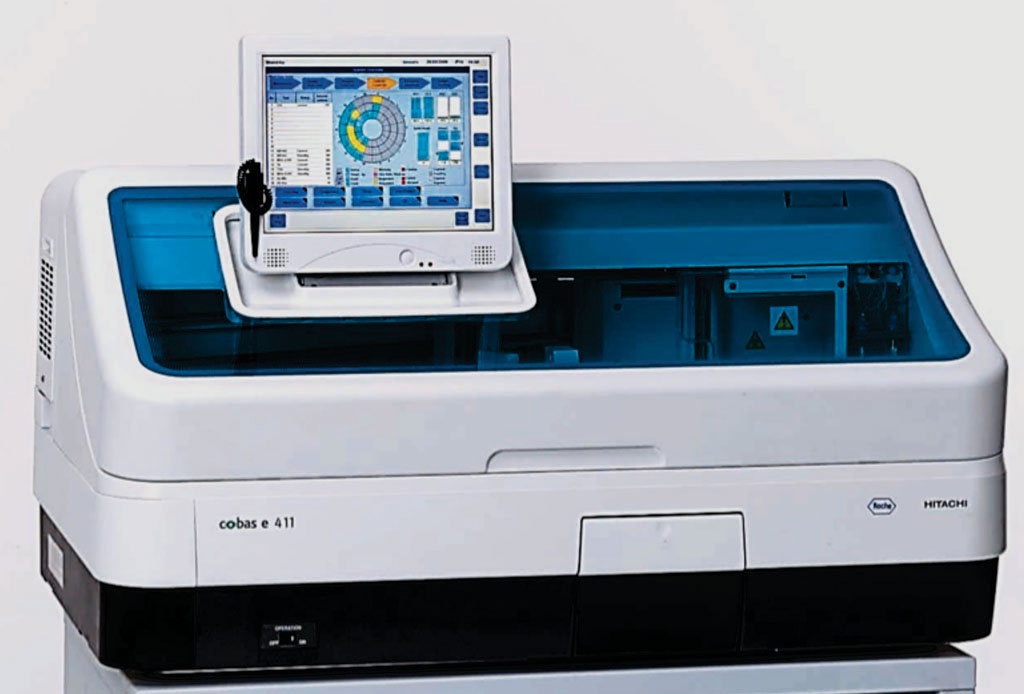Performance of Second Generation Cortisol Assay Evaluated
By LabMedica International staff writers
Posted on 21 Dec 2016
Untreated disorders of the adrenocortical system, such as Cushing’s or Addison’s disease, can be fatal, and accurate quantification of a patient’s cortisol levels is vital for diagnosis. A straightforward diagnostic approach is of essential importance, and accurate quantification of cortisol levels plays a key role in the diagnosis of patients with suspected disease.Posted on 21 Dec 2016
Cortisol levels are often measured from a patient’s serum or plasma, which reflects total cortisol, both free and bound. However, in patients with liver disease, and for those receiving estrogen treatments or with critical illness, total serum cortisol levels may be difficult to interpret because of the variation in binding proteins.

Image: The cobas e 411 fully automated, random access system for immunoassay analysis (Photo courtesy of Roche Diagnostics).
Laboratory scientists at the Hospital of the University of Munich (Munich, Germany) and their colleagues performed a technical evaluation of the Elecsys Cortisol II assay (Roche Diagnostics GmbH, Mannheim, Germany) between June and November 2014 at four European investigational sites: three in Germany (Munich, Heidelberg, and Leipzig) and one in Belgium (Ghent). All sites used cobas e 411 analyzers for the Cortisol II assay experiments and in addition to a cobas e 411 system, the Leipzig site utilized a cobas e 601 analyzer. The Cortisol II assay was also compared with in-house isotope dilution liquid chromatography-tandem mass spectrometry (LC-MS/MS) assays.
The team reported that for the method comparison studies, the serum samples covered a measuring range of 1.7 to 1,735 nmol/L and the saliva samples from 1.5 to 209.5 nmol/L. For the 405 serum samples, the agreement between the Cortisol II assay and LC-MS/MS was high, and the mean bias for serum samples measured on the Cortisol II assay compared with LC-MS/MS was 14.55 nmol/L. The correlation coefficient for the relationship between the Cortisol II assays versus LC-MS/MS for 253 saliva samples was 0.993, and for these comparisons, the mean bias was 2.56 nmol/L.
The authors concluded that for the Cortisol II assay, they observed a degree of between-laboratory and between-production lot reproducibility and agreement with several assays of higher metrological order that they consider compatible with the diagnostic use of this assay. The Cortisol II assay will be beneficial to endocrinologists in assessing patients with adreno-cortisol disorders. The study was published on November 29, 2016, in the journal Clinical Chemistry and Laboratory Medicine.
Related Links:
Hospital of the University of Munich
Roche Diagnostics













